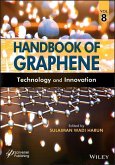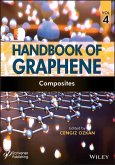Graphene Materials: Fundamentals and Emerging Applications brings together innovative methodologies with research and development strategies to provide a detailed state-of-the-art overview of the processing, properties, and technology developments of graphene materials and their wide-ranging applications. The applications areas covered are biosensing, energy storage, environmental monitoring, and health. The book discusses the various methods that have been developed for the preparation and functionalization of single-layered graphene nanosheets. These form the essential building blocks for the bottom-up architecture of various graphene materials because they possess unique physico-chemical properties such as large surface areas, good conductivity and mechanical strength, high thermal stability and desirable flexibility. The electronic behavior in graphene, such as dirac fermions obtained due to the interaction with the ions of the lattice, has led to the discovery of novel miracles like Klein tunneling in carbon-based solid state systems and the so-called half-integer quantum Hall effect. The combination of these properties makes graphene a highly desirable material for applications. In particular, Graphene Materials: Fundamentals and Emerging Applications has chapters covering: * Graphene and related two-dimensional nanomaterials * Surface functionalization of graphene * Functional three-dimensional graphene networks * Covalent graphene-polymer nanocomposites * Magnesium matrix composites reinforced with graphene nanoplatelets * Graphene derivatives for energy storage * Graphene nanocomposite for high performance supercapacitors * Graphene nanocomposite-based bulk hetro-junction solar cells * Graphene bimetallic nanocatalysts foam for energy storage and biosensing * Graphene nanocomposites-based for electrochemical sensors * Graphene electrodes for health and environmental monitoring
Dieser Download kann aus rechtlichen Gründen nur mit Rechnungsadresse in A, B, BG, CY, CZ, D, DK, EW, E, FIN, F, GR, HR, H, IRL, I, LT, L, LR, M, NL, PL, P, R, S, SLO, SK ausgeliefert werden.









